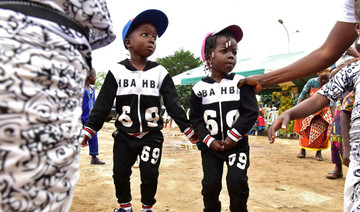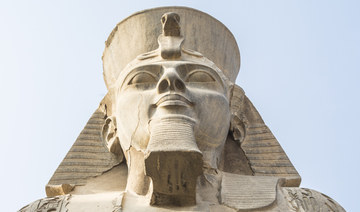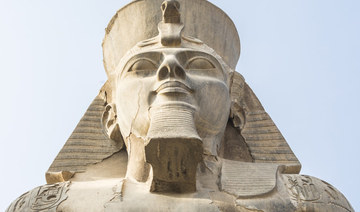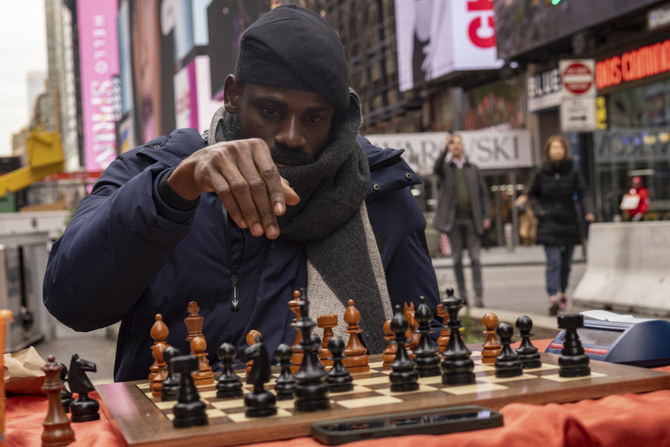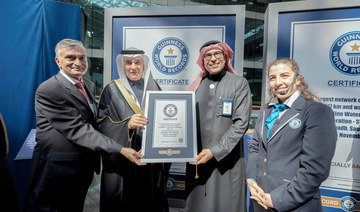ABIDJAN, Ivory Coast: Fans of Ivorian singer DJ Arafat opened his coffin Saturday to take photos of the corpse, prompting police to fire teargas after an overnight funeral concert where tens of thousands paid tribute to the one of West Africa’s most popular stars.
Following hours of musical homage, tears, and solemn reminiscence at Abijan’s main stadium, events took a dark turn as fans battled police preventing them from entering the cemetery where the singer’s family gave him a private burial.
But several did make into the Williamsville cemetery in Abidjan’s working-class Adjame district, forced open the fresh grave and coffin, and took photos and videos that they shared on social media. Police fired teargas to disperse the grave profaners, and several people were injured, witnesses told AFP.
“We wanted to see the body of our idol before the tomb was sealed,” said one fan, who did not give a name. Throughout the night, A-list African stars such as Davido, Sidiki Diabate, Fally Ipupa and Serge Beynaud had sung in memory of DJ Arafat, who died aged 33 on August 12 after a motorbike crash in Abidjan.
“The ceremony was really moving,” said Raymonde Nguessan. “We have lost a great man.” Another fan, Samuel Kablan, tearfully declared: “Arafat was my life, my source of inspiration.” Culture Minister Maurice Bandaman conferred on DJ Arafat the national order of cultural merit for “his immense contribution to the artistic radiance” of Ivory Coast.
On Saturday morning, before the private burial, DJ Arafat’s casket was placed at the center of the 35,000-capacity Felix Houphouet-Boigny stadium in Abidjan, drawing wild applause before the mood turned somber and many burst into tears. The singer, whose given name was Ange Didier Houon, was one of the Francophone world’s most popular African musicians, considered the “king” of coupe-decale (cut and run) — an Ivorian form of dance music.
News of his death led to scenes of hysteria among fans and Twitter tributes from fellow artists. President Alassane Ouattara called him “a youth icon and ambassador of Ivorian music and culture.” DJ Arafat’s five children were present at the concert. There was tight security at the venue with some 6,500 security forces deployed across the stadium overlooking Abidjan’s picturesque lagoon.
State radio and television broadcast the event live and giant screens were installed in Yopougon and other working-class areas, as well as the upmarket Cocody-Angre district where DJ Arafat lived. With a professional recording engineer for a father and a singer for a mother, a young DJ Arafat was well placed to discover musical techniques on the job.
“He toured the studios to learn, he was curious about everything,” said Franck Alcide Kacou, label and publishing manager of Universal Music Africa, a subsidiary of the multinational Vivendi, which produced DJ Arafat’s work from 2013.
Working as a disc jockey on Rue Princesse, DJ Arafat made his breakthrough with “Jonathan” in 2003, which he followed with a string of other hits.
He “revolutionized coupe-decale by mixing sounds and rhythms. For instance he was inspired by African traditional music, but also by Nigerian Afrobeat, by rap and by Brazilian funk,” Kacou said. “He was also an exceptional dancer and he linked the music he made to new dance forms.”
Coupe-decale originated in the bars of the lively Rue Princesse in the working-class Yopougon district of Abidjan and clubs and spread across West Africa.
His broad musical interest was reflected on DJ Arafat’s last album “Renaissance,” released in December 2018 and featuring artists including Congolese rapper Maitre Gims and French singer Dadju.
The Ivorian star was also known for conflict with rivals.
“He had a divisive personality. He was very sensitive, which explains his ‘unfiltered’ reactions and clashes with other artists, which formed part of his musical career,” Kacou said. DJ Arafat won artist of the year in the Coupe-Decale Awards of 2016 and 2017, and had been named “Best African Artist” in 2012 at the pan-African Kora Music Awards.





